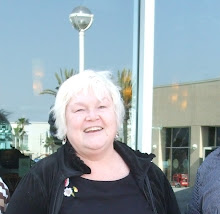
On the left side of my graphic organizer, Content, there are qualities needed in any F2F class, but they are also important in a distance learning section. Adding technological tools that learners are using in their non-school learning makes sense (Soloway, 2009). They already own cell phones, iPods, and MP3Players, and in some schools, these devices are seen as a danger (Macleod, 2009). Cell phones can be used for calendars, homework reminders, and connecting to teachers and classmates regarding class work, in addition to connecting to the Internet and adding pictures to writing assignments (Prensky, 2005). Email, blogs, and wikis can and should be used for information and discussions; they can also be used for collaboration and assignment submission. Many of these same features are part of iPods and MP3 Player capabilities. It behooves teachers to create assignments at suggest to students that they could choose these tools—if the teacher and the school allow them, the students will find ways to use them.
Soloway, C. N. (2009, January 14). Get Cell Phones into Schools. BusinessWeek: Technology. Retrieved from http://www.businessweek.com/technology/content/jan2009/ tc20090114_741903.htm
Macleod, F. (2009, October 31). 'Treat mobiles in schools like offensive weapons' - Scotsman.com News. from http://news.scotsman.com/education/39Treat-mobiles-in-schools-.5783435.jp
Prensky, M. (2005). What can you learn from a cell phone? Almost anything! Innovate Journal of Online Education 1(5). Retrieved from http://www.innovateonline.info/
